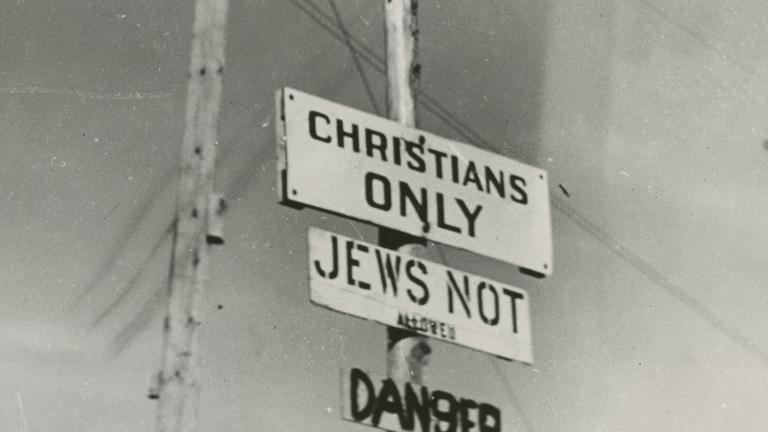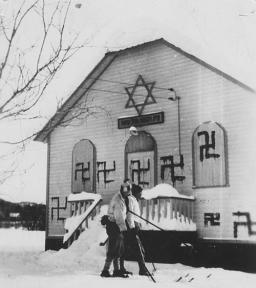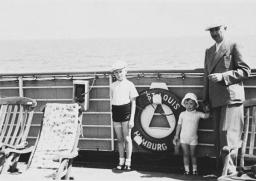Anti‐Jewish persecution in Nazi Germany and beyond intensified during the 1930s under Adolf Hitler’s regime. Many Jews were desperate to escape. Yet even as the Nazis’ ambitions to eradicate the Jewish people were becoming clear, very few countries would open their borders to them. Canada was one of many nations that refused to admit Jews trying to flee the antisemitic oppression that would culminate in the Holocaust.
Canada, antisemitism and the Holocaust
Antisemitism closed Canada’s borders to Jews attempting to flee Nazi persecution
By Jeremy Maron
Published: November 5, 2021
Tags:

Alex Dworkin Canadian Jewish Archives, file no. PC 01-03-074A
Story text
In 1930s Canada, the social and economic hardship of the Great Depression caused some Canadians to look for scapegoats to blame. This led to increased intolerance and suspicion towards minority groups, including Jews. Despite the worsening conditions for Jewish people in Nazi Europe, antisemitic sentiments – and even support for the Nazis – were widely and openly promoted in Canada. Given the breadth of these sentiments, Canadian Jews faced discrimination and exclusion from parts of Canadian society.


Unsurprisingly, anti‐Jewish sentiment was also commonly found among Canada’s political leaders. Antisemitic perspectives and stereotypes led Canada to severely restrict the number of Jewish refugees let into the country. This restriction would have lethal consequences for Jews living in Nazi Europe who were hoping to flee increasingly violent persecution.

Despite the frantic efforts of advocates both within and beyond the Canadian Jewish community, Canada would admit only a small number of Jews attempting to escape Nazi oppression. Between 1933 and 1945, fewer than 5,000 Jewish refugees were allowed into Canada – the smallest number of any Allied nation.

In the years and decades after the war, many Holocaust survivors did eventually come to Canada and make it their home. However, the nation’s refusal to admit Jews threatened by the Nazi regime contributed to the deaths of many who were unable to find a route to escape.
This film explores the antisemitism that pervaded Canada during the time of the Holocaust and encourages us to think about our collective responsibility when people face human rights violations around the world.
Ask yourself:
How can we recognize and resist bigotry and intolerance caused by difficult economic times?
In what ways does antisemitism continue to appear in Canadian society?
How are various groups of people stereotyped, insulted, or unfairly blamed for things in my community?
Suggested citation
Suggested citation : Jeremy Maron. “Canada, antisemitism and the Holocaust.” Canadian Museum for Human Rights. Published November 5, 2021. https://humanrights.ca/story/canada-antisemitism-and-holocaust